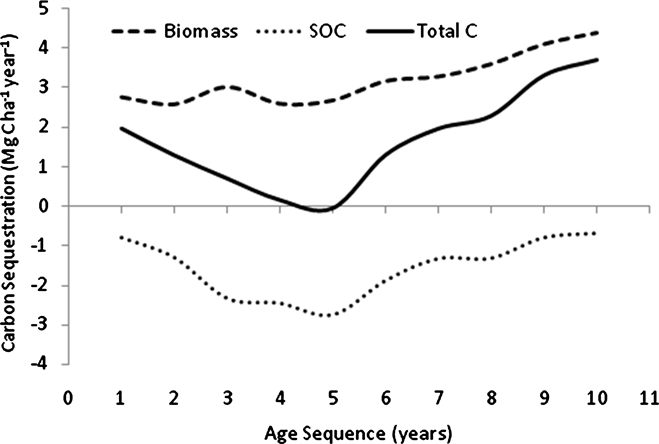
- #Carbon sequestration rate android#
- #Carbon sequestration rate software#
- #Carbon sequestration rate plus#
Expert understanding of the formal elements of design, including typography, layout, balance, and proportion.Solid knowledge of the creative process at high quality, and to specification.Create and manage asset libraries for reusable, systematic design.Assist the front end team in implementing precise visual design.
#Carbon sequestration rate android#
Design elegant UIs and graphics for a global audience across platforms: web, iOS, Android and print.Click on the “Apply Now” button in the related section.Available to work from EcoMatcher office in Bandung.Capable to communicate in English properly.Problem solver that requires very little guidance on projects thrives in a fast-paced environment.Excellent organization and presentation skills to structure your presentations and documents in a way that can be easily understood and modified by others.Experience developing accessible technologies.Experience working on agile methodologies and collaborative version control tools.
#Carbon sequestration rate plus#
Familiar working with a relational database, WordPress framework, and Amazon Web Service (AWS) is a plus.Experience with one or more general-purpose programming languages including but not limited to: PHP, Python, JavaScript, CSS, and Go.Graduate in Computer Science, similar technical field of study or equivalent practical experience Reputable university graduates is a plus.Self-motivated, with excellent written and verbal communication skills.

Collaborate with team to manage project priorities, deadlines, and deliverables.
#Carbon sequestration rate software#
Develop, maintain and improve EcoMatcher software. #treeplanting #carbon #sequestration #climateaction #carbondioxide But while the exact CO2 sequestration rates may require more accurate measurements to pinpoint, the impact trees can create is undeniable in our global fight against climate change, in addition to the host of localized functions it can fulfill. CO2 sequestration can differ even within tree species, with multiple factors such as growth conditions also at play. Ultimately, the growth of each tree is non-linear, and the greatest sequestration stage is in the younger stages of tree growth, depending on rates and peaks of individual species, with the sequestration of CO2 per year dropping thereafter. W carbon-dioxide = 3.67 * W carbon = 3.67 * 171.5 = 629 lbs CO2 sequestered in 10 years that equals 285 kg. EcoMatcher uses an aeverage of 250 kg CO2 sequestered per tree. W total green weight = 1.2* W above-ground= 1.2 * 394 = 473 lbs Therefore, to determine the weight of carbon dioxide sequestered in the tree, multiply the weight of carbon in the tree by 3.67. The weight of CO2 in trees is determined by the ratio of CO2 to C is 44/12 = 3.67. The atomic weight of Carbon is 12 (u) and the atomic weight of Oxygen is 16 (u). Step 4: Determine the weight of carbon dioxide sequestered in the treeĬO2 has one molecule of Carbon and 2 molecules of Oxygen. Therefore, in determining the weight of carbon in the tree, multiply the dry weight of the tree by 50%. The average carbon content is generally 50% of the tree’s dry weight total volume. Step 3: Determine the weight of carbon in the tree W dry weight = 0.725 * W total green weight Therefore, to determine the dry weight of the tree, multiply the total green weight of the tree by 72.5%. The average tree is 72.5% dry matter and 27.5% moisture. Step 2: Determine the dry weight of the tree W total green weight = 1.2* W above-ground Therefore, to determine the total green weight of the tree, multiply the above-ground weight by 1.2: The root system weight is about 20% of the above-ground weight. W above-ground= Above-ground weight in pounds W above-ground= 0.25 D 2 H (for trees with D11) First, you have to calculate the green weight of the above-ground weight as follows: The green weight is the weight of the tree when it is alive. Step 1: Determine the total green weight of the tree That said, there are ways to estimate a tree’s CO2 sequestration, see below. 
The rate of carbon sequestration depends on the growth characteristics of the tree species, the density of its wood, the location’s conditions for growth, and the plant stage of the tree. Please note those are average numbers as multiple different species are being planted. A key “feature” of a tree is that trees sequester carbon – the process of removal and long-term storage of carbon dioxide (CO2) from our atmosphere.ĮcoMatcher and its tree-planting partners estimate that the trees planted sequester CO2 at an average of 25 kilos per tree per year we use an average of 250 kilos over a tree’s lifetime.






 0 kommentar(er)
0 kommentar(er)
